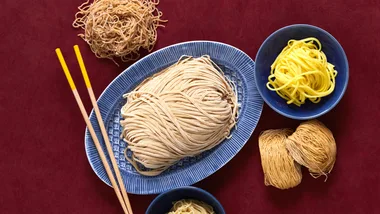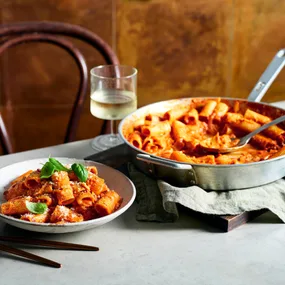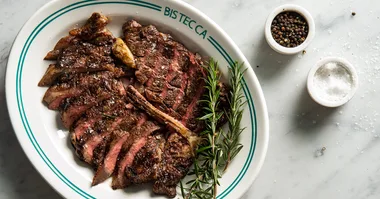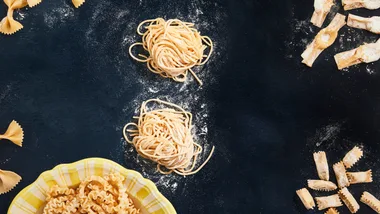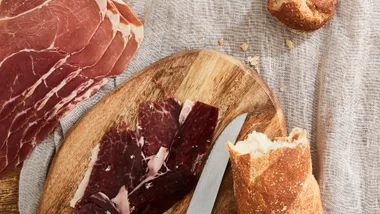All you really need to master fabulously flaky pâte feuilletée, or what we like to call puff pastry, is flour, butter and plenty of time and patience.
Most cooks, no matter how accomplished and confident, have a culinary nemesis. For many, baking is it, and it goes double for pastry making. And then there’s puff pastry. With its lengthy method and precise (although not difficult) technique, it’s tempting to leave it in the too-hard basket.
Although time-consuming, there’s a certain pleasure to be taken in the repetition of the turns, by which magical equation creates literally thousands of layers (2187 to be precise!) of pastry. And once the scent of its buttery goodness fills your kitchen as you bake, and you savour the mouth-watering flakiness as you bite into it, you’ll be hooked. Plus, the great thing is, making just one batch will see you through for quite a while. It can be cut into portions, sealed in plastic wrap and stored in the freezer until you’re ready to use it.
Legendary French chef Marie Antoine Carême is credited with refining the technique of making pâte feuilletée or puff pastry. Although similar pastries originated in ancient Rome and were re-introduced in the 17th century, Carême’s method of developing the layered structure by six ‘turns’ created a pastry of unparalleled lightness and flakiness. The secret to its rise is in creating layer upon layer of butter and dough. When cooked, the water content of the butter is converted to steam, pushing the layers apart, creating a light, flaky pastry.
There are a few key things to keep in mind when making puff pastry. The old ‘good things take time’ adage rings particularly true; set aside a good chunk of time on a cool day and off you go. It’s wise to make the base (also known as a détrempe) a day ahead, giving it plenty of time to rest and become firm. That way, the consistency of both the base and the butter are the same, making it easier to create even layers.
In the technique illustrated on the following page, you’ll need to slice the butter evenly and place it in a single layer on a baking paper-lined tray and refrigerate it until firm. Contrary to usual advice, cheaper butters, which have a higher water content, are best. This in turn means more steam is given off during cooking, which means a flakier pastry.
When rolling, always work on a cold bench and use only as much flour as you need to stop the pastry sticking to the bench or rolling pin. Brush off excess flour with a pastry brush before you fold and turn. Work as swiftly as possible and allow plenty of time to rest in between turns. If you find the pastry is quite soft after only one turn, wrap it in plastic and refrigerate until it’s firm again. Once you’ve completed all the turns, make sure you give the pastry a really good rest in the refrigerator until firm (about 2 hours) before using it. Roll out the pastry in both north-south and east-west directions, which helps create a more even rise and stops uneven shrinkage. Rest the pastry again in the refrigerator until it’s firm before trimming or cutting.
Remember these tips and a whole new world of pastry delights will be at your fingertips. Think French classics such as tarte Tatin, pissaladière and mille-feuille (literally, ‘a thousand leaves’), or consider using your creation as the crust to a luscious pot pie, as we’ve done here, in layer upon layer upon layer.
Ingredients
Method
Main
Note For acidulated water, add juice of half a lemon to 1 cup of water.
Notes


